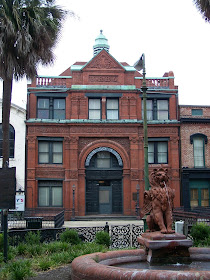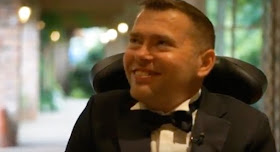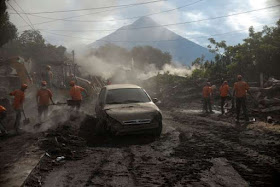"Among democratic nations, . . . all the citizens are independent and feeble; they can do hardly anything by themselves, and none of them can oblige his fellow men to lend him their assistance. They all, therefore, become powerless if they do not learn voluntarily to help one another."It's a VERY hot July weekend here at Hodapphaüs, and I stare at my backlog of unwritten articles, missed deadlines, ungraded essays, and half-finished emails with dread. I'm doing it. I'm doing it.
--Alexis de Tocqueville
This really isn't going to be another one of Hodapp's wheezy posts about lost temples, and yet it will seem like it, because they are a symbol (like so much else in Freemasonry). Nonetheless, I'm in a despondent mood, possibly from reading too much about Masonry's past a lot lately. I just reacquainted myself with Arthur Schlesinger's "Biography of a Nation of Joiners" (1944) and Charles Merz' "Sweet Land of Secrecy" (1927), both describing the height of the Golden Age of Fraternalism in America (you can find both in the excellent collection Secret Societies in America: Foundational Studies of Fraternalism, edited by Will Moore and Mark Tabbert). That period coincided with our greatest building boom.
And it finally occurs to me that the biggest ill ailing Freemasonry in modern times has absolutely zero to do with "modern man," not enough discretionary time and income, raising kids and conflicting soccer practices, falling morals, dramatic loss of religious faith and traditions, anti-Masonic forces, public perception, the Internet, streaming television, smartphones, not enough publicity, or expensive dues (don't make me laugh uncontrollably and pass my Diet Cherry Dr. Pepper through my nose). Nope, it's much simpler than any of that.
When these other halls were built in the 1920s, the Freemasons were the pinnacle of fraternalism in a very crowded field. We were the top of the heap, the gold standard. That was our reputation to the outside world, and inside of our own lodges, too. We built great temples and did great things because we thought the best of ourselves, and in many ways, attracted only the best of men because of that.
Thankfully, the new owners reserved a small room set aside to display the artifacts “…left behind by the Masons before they abandoned the building.” But entering that room did not bring much joy to Greg:
There's no competition anymore.
At every explosion of Masonic membership in America, we shared our spoils with (and also spawned) an ever-increaing number of imitators. In the time after our American Revolution, scores of scientific, philosophical, literary, and other self-improvement societies took off like wildfire to bring European and Enlightenment-era concepts to the new country and educate a rugged and growing population that was headed westward. After the Civil War, Masonic grand masters all over the country railed against the chartering of too many lodges too quickly, but to no effect — the membership went up and up. And we suddenly had stacks of competing orders all chasing the returning veterans to fulfill the sense of fraternalism they shared in the military that was now lost. Same way after WWI ended, through the '29 Depression, when there were close to 1,000 other fraternal associative groups in the country. Millions upon millions of Americans belonged to one or more of these orders, and they all needed a hall to meet in, dues to be paid (and kept competitively low), scores of officers to fill stations, ritualists to enact parts in their theatrical initiations, volunteers to cook dinners and undertake community projects, and members to line the sidelines. Churches competed for almost the exact same people for many of the same jobs and similar levels of participation. That's when Freemasonry built our most magnificent, landmark temple buildings, because so was everyone else.
Forgive the local nature of these observations, but in my home town of downtown Indianapolis, of the classic "secret society" fraternal groups, only the Freemasons retain our big and impressive post-WWI clubhouses: Indianapolis Freemasons Hall (1909), the Scottish Rite Cathedral (1929), and at least part of the Murat Shrine Temple (the 1958 expanded clubhouse side, though the theatre side built in 1909 was leased to others long term). Several Prince Hall lodges (including Central Lodge 1 PHA) and appendant bodies banded together as the Prince Hall Masonic Temple Association in the 1980s and bought the former Oriental Lodge 500 Temple (1916) on Central Avenue, and so even it, too, remains as a Masonic building today.
 |
| Former Odd Fellows (IOOF) building, Indianapolis |
The only other large and impressive fraternal structures that remain within downtown Indianapolis are the former Odd Fellows tower (1908) at Washington and Pennsylvania Streets, and the beautiful, white glazed porcelain brick, former Knights of Pythias building (1925) on Meridian Street (even it was not a meeting hall, but originally housed the offices of their once burgeoning insurance program). When Indiana's Freemasons celebrated our 150th anniversary in 1968, neither of those two other groups owned their buildings, and were already mere ghosts of their former selves nationally - the Odd Fellows are down to a mere four lodges left in all of Indiana, according to their Grand Lodge website.
There's still the good sized Knights of Columbus McGowen Hall (1922) on Delaware Street, but the recently abandoned American Legion Headquarters (1927) anchoring the now incongruously named 'American Legion Mall' sits vacant. The Athenaeum (once Das Deutsche Haus, built in 1893-98) is still the home to a variety of German-related clubs and groups, but these never been what anyone would consider "secret society" sorts of places. There are other local, former fraternal buildings dotted around our downtown area, but none of them retain their original ownership and purpose of being a meeting hall for initiating and gathering their members.
 |
| Former Knights of Pythias high-rise, Indianapolis (now demolished) |
And today, for all intents and purposes, we are all that's left.
The Odd Fellows formed in 1730 and were once larger than Freemasonry in national membership. Today, they are down to under 600,000 worldwide (or a million, depending on how you count and whom you ask, since they also have recognition and regularity issues, and nobody likes to admit falling membership to outsiders anyway). The Knights of Pythias were down to 50,000 in 2003, and don't want to talk about numbers anymore. The Woodmen of the World claim 900 chapters nationwide, but they are largely an insurance company, and have been for decades. They just "rebranded" themselves as WoodmenLife. The Foresters and the Macabees went the insurance route, and are essentially gone. The Redmen are mostly vanished, and if there's an aging member of the Tribe of Ben Hur out there anywhere, send me a note. The Moose, Elks, Eagles and others cling on as social clubs (and remain popular in pockets of the country), but the Owls and the Oaks are gone. So are hundreds and hundreds and hundreds and hundreds of other major and minor groups (take a stroll through the Rathbone Museum in Lafayette, Indiana sometime—that's their photo at the top of this post).
The world became an ever-increasingly impersonal place, we all stopped dealing face to face, and a handshake stopped meaning anything besides a involuntary reflex greeting like saying "Hi!" or "Have a good one!" Person to person, middle-class jobs and relationships vanished, communities died, people retreated to suburbia and one year lease apartments, and the fraternal groups closed one by one.
The world became an ever-increasingly impersonal place, we all stopped dealing face to face, and a handshake stopped meaning anything besides a involuntary reflex greeting like saying "Hi!" or "Have a good one!" Person to person, middle-class jobs and relationships vanished, communities died, people retreated to suburbia and one year lease apartments, and the fraternal groups closed one by one.
Now, Freemasonry is the last order standing, in the world of the formerly large, non-sectarian "secretive societies." We have no reason to be better or more impressive or more selective or more interesting than the other "dues-card-and-a-pin-I'm-in" orders, because there's no one else. And in all honesty, the world is not a better place for it, because the fraternal groups reinforced the sense of community that we don't share anymore. When the big fraternal groups competed to build the bigger or better buildings on our skylines, they signaled that our towns had lots and lots of citizens who cared very much for their communities. Now we pitch them overboard, build pole barns in cornfields, and offer little at our meetings to entice anyone to come back next month. Or join in the first place. Much less, to make large donations in their wills for us to do bigger and better things when they join the Great Majority.
I coincidentally ran into two poignant blog entries found on other websites recently. The first is Robert Johnson's post a couple of weeks ago, Shadows Burned Onto the Walls - Addressing Freemasonry's Biggest Problem.
The other entry I'll point you to is the haunting exploration of the former Los Angeles Scottish Rite Center by Brother Greg Stewart on the Freemason Information blog site: Something Lost: The Los Angeles Scottish Rite Cathedral.
In it, Robert expresses the despair nearly all contemporary members of the fraternity have at one point or another. I sense that the entry was based on a speech he gave at some point, and buried in it is perhaps the sagest of sage wisdom ever said to a fellow Freemason in times of troubles: “You have to be okay with Masonry the way it is. Work on your own path.”
Read it over on the always excellent Midnight Freemason blog site HERE.
Built at enormous cost and with great care in 1961, yet essentially dead in (appropriately) just 33 years, the Cathedral was recently converted to a modern art gallery. Greg recently took a tour of the newly reopened building, and he echoes my own sentiments whenever one of our more magnificent temples gets consigned to the dumpster voluntarily by our own members.
"I can’t say for certain if it was the space, the items in the space or the words taken in the context of the aforementioned relics of what Freemasonry once was. Leaving the relic room, I was moved to tears — not for the casual housing of materials sacred to me, but tears for what those relics once represented to the people in the space. To the owners of the history that poured the foundation and raised the marble edifice. Perhaps more so, the thought that this was the future of Freemasonry. That an empty building full of abandoned “relics” was really what lay at the end of it all. Yes, the building is just a building, but it affects the priest no less to see the church he dearly loved, laid low by a fire or an earthquake.
"Masons are builders and buildings can be replaced. But walking through the bones of a structure built to show the “intensity of feeling throughout history toward the Meaning of Masonry” felt like a priest walking through the ashes of his fallen church.
"I wanted to feel optimistic about the space. I wanted to appreciate it for what it once was.
Instead, I left haunted feeling depressed and overwhelmed. Not at the space or the modern art within its walls. I was haunted by the ghosts of what it once was."




























